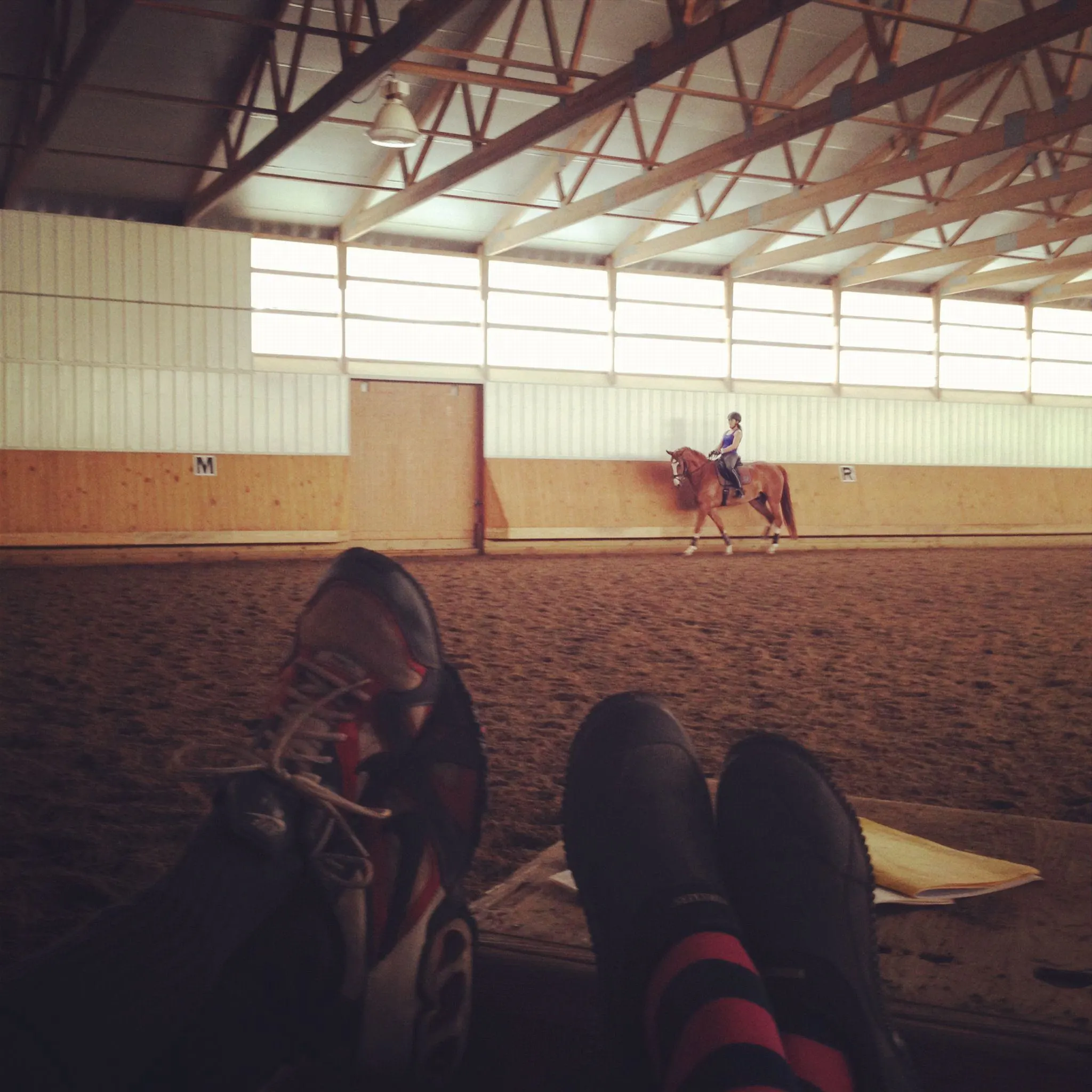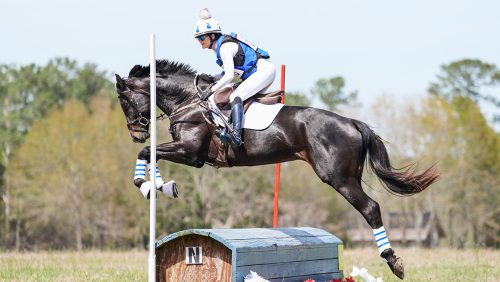How do you find a trainer? Word of mouth, advertising, a recommendation from a friend or a vet or a tack shop owner or, or, or. But once you’ve found some candidates, how do you pick which one is the right fit? (Or how do you know that your current trainer is the WRONG fit?)
When picking a trainer, you’ll first need to eliminate anyone who doesn’t fit your essential criteria: a location you’re willing to travel to, a cost structure you can afford, a schedule that suits yours. Then, consider a few of these questions:
- Has this trainer done what you want to do? And has she taught someone to do what you want to do?
If you don’t have competition ambitions, or if your goal is to compete at the lower levels at local shows, you don’t necessarily need to ride with a two-time Olympian. You might be just fine with a local pro, someone who’s maybe done second level at some point or doesn’t have vast experience in your discipline but is a good all-around horseman. (You can, of course, ride with that bigger-time trainer, and there’s a chance you’ll get an incredible education AND potentially go farther than you thought possible.)
But if you want to work your way up the levels to the big time, you need to ride with someone who’s been where you want to be, and it’s even better if that person has brought others to where you want to be.
A little Internet research can be your friend. Jay Stevens’ great website www.centerlinescores.com is a terrific tool that lets you see any U.S. Dressage Federation member’s recognized show record from 1992 to the present. It doesn’t tell you whether they showed the level that they showed on horses they’ve trained themselves or on schoolmasters, and it doesn’t tell you if said trainer got a given horse to a level through less-than-savory training techniques. But if you want to ride Grand Prix, and a trainer you’re considering has only shown to third level, that’s information you should consider.
- Do you like the way he teaches, both at home and at shows?
Any trainer who wants your business will welcome you coming to watch him teach, both at home and at a show. Is he clear in his explanations? Does she stay focused? Does she bring an energy you like to her lessons? Can you understand his voice?
And do you like her brand of “tough?” Some riders like their trainers to be really, really positive; others don’t mind a little tough love. No trainer should EVER make a student feel stupid or inferior, but some people love a fire lit under their behinds, as opposed to an Uncle Fluffy lesson. It drives me batty when I’m riding with someone who says everything I do is “good.” I know I’m “good!” I want to be BRILLIANT!
ADVERTISEMENT
I particularly like watching trainers at shows. Every rider deals with show-day anxiety differently, and a good trainer should be able to adapt to each rider. Does she kick Sally’s butt into gear while telling Suzie fart jokes to help her relax? That’s a skilled trainer.
- Do her students look good?
This isn’t to say that, if you’re watching a lesson where the student is working on sitting trot for the first time, she should be sitting like Edward Gal by the end, otherwise the trainer sucks. We all have students at all levels of riding.
But at the shows, do her students look prepared? Do they look like they’re showing at the level at which they should be showing? If they’re showing Prix St. Georges, can they sit the trot? (If not, this is bad.) If they’re showing training level, test 1, do they look like they’re ready to be at a horse show at all? A trainer’s students shouldn’t necessarily all look like rock stars, but if there are 10 people with your potential trainer, and all 10 look like a hot mess, you might have a red flag.
- Is she professional?
Is he dressed for the job? Are her tack and blankets in good repair? Or is he warming up for his class at the show, cantering around, with a cigarette hanging out of his mouth? (I’ve seen it. Amazing.)
- Does he make it easy to get in touch with him?
Phone, texts, emails – whatever technique your trainer prefers, he should be reasonably easy to get a hold of.
- Is he still actively involved in the sport? Does he continue his education?
I rode with Lendon Gray while I was in college and continued to do so for years after graduation. I’d still ride with her today, if the opportunity presented itself. (I sought out Michael because he was two hours closer and had a little more flexible schedule.)
Lendon, to the best of my knowledge, hasn’t sat on a horse in years. She is, unfortunately, plagued by back trouble. When she was still operating out of Sunnyfield Farm, she had a staff of working students and assistant trainers, skilled riders all, who could hop on when a client horse needed some professional saddle time.
ADVERTISEMENT
Even though Lendon, a LEGEND in dressage both domestically and internationally, a two-time Olympian, no longer rides, she still attends clinics, lectures and symposia, and she brings her students to shows to stay connected to the sport and where it’s heading. Even though she’s not riding competitively, she’s still 100 percent In The Game.
Even if a trainer isn’t actively showing himself, he should still be connected, still seeking out high-quality help in his own riding (everyone at the Olympic level still has a coach!), or in the riding of his students.
- Do you want to ride like her, or her students?
I watched a professional teaching a young lady at a horse show recently who was in that “hot mess” category. The horse was wildly out of control, throwing its head and bolting violently, and the kid’s corrections were pretty harsh; even worse, the look on both rider’s and trainer’s faces said that this was not an unusual occurrence. Why, I wondered, would any trainer think this was the sort of situation that was ready to come to a show?
Then the trainer picked up the reins on her horse and had almost the same ride – vicious spooking and head-tossing from the horse, then punishment from the rider.
We all know that sometimes, in animal training, things are not going to look amazing. It can’t be sunshine and roses all the time. But when you watch this trainer ride, are you inspired? On a “normal” day, does the trainer sit well? Do her horses go well, or do they look miserable? Does he reward his horse for things done right? If you watch him on a “bad day,” do his corrections seem clear, consistent and fair? Does she lose her temper, or does she deliver swift justice and move on?
In the end, if you like what you see, go take a trial lesson or two. Come with an open mind, ready to learn. You might be thrilled with the change.















